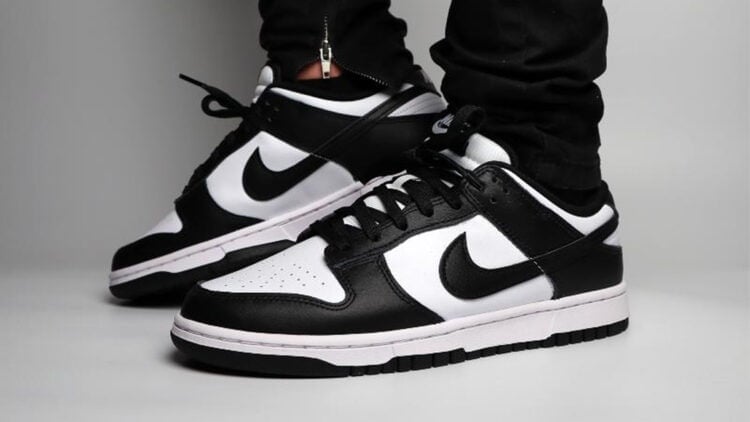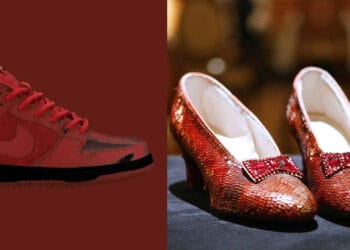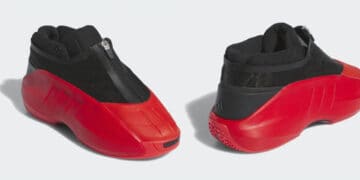Have you ever thought about what makes the Nike Panda Dunk as much a standout, successful sneaker as it is an object of contempt? It seems an oversimplification, but it’s proof that there’s something to be said about human beings and their fascination with pandas.
The Rise of Nike Panda Dunks
Setting aside the cute factor (which I’ve used here facetiously), it’s a visual thing – that powerful contrast between black and white and what it signifies – the existential link between good and evil, light versus dark, and everything else these two colours represent. It’s in art, fashion, nature, everywhere. In music, several artists have written songs – sometimes cringeworthy – featuring the word ‘panda’. Most famous of all is the rapper Desiigner’s chart-topping track called “Panda”.
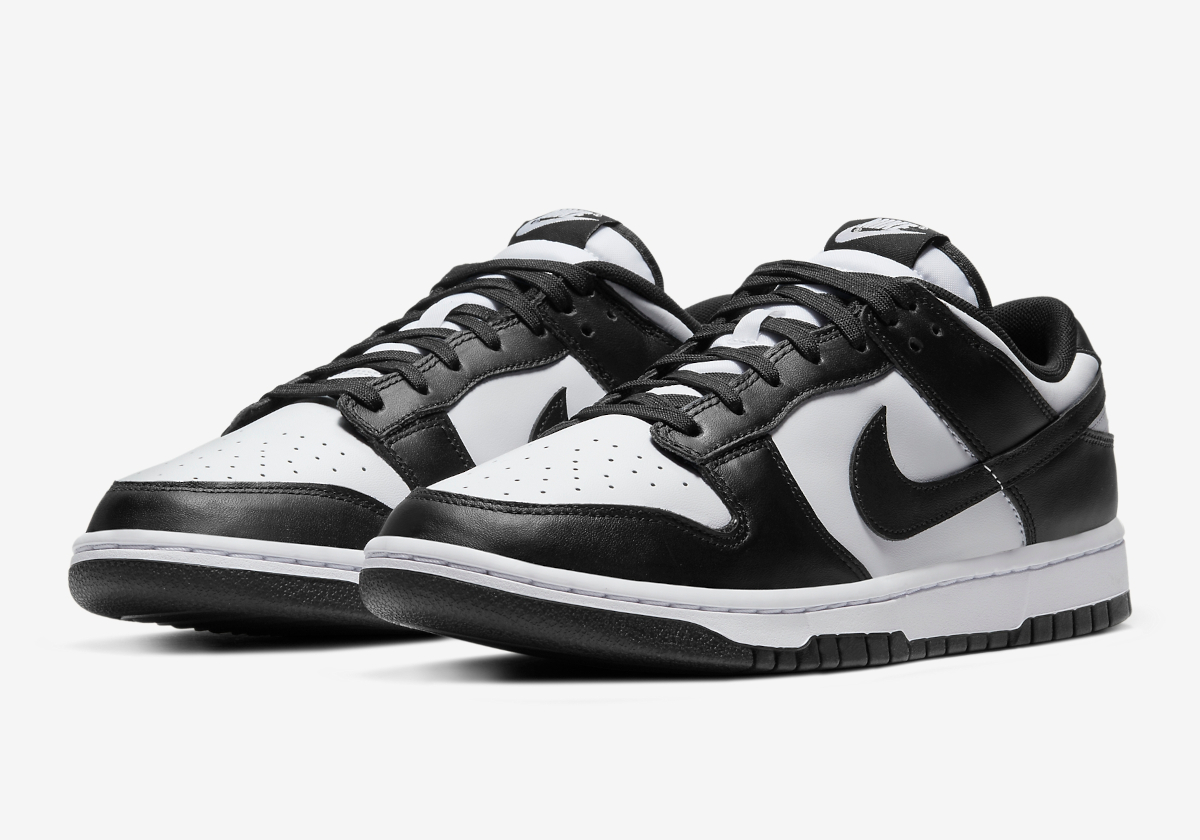
The Nike Dunk Low “Panda” is a 21st century sneaker enigma. As the name does not attempt to hide, the Dunks are a pair of sneakers that feature a simple but striking colour scheme – black and white – inspired by the giant panda, a rare and endangered animal native to China. This seemingly simple shoe, featuring a classic white leather upper with contrasting black overlays, has become a something of a fixture in Nike’s lineup, and yet, as we said, it seems to be comfortable playing the role of a villain quite well too. Scroll through any of the social networks – Facebook, Twitter or Reddit – and search for groups dedicated to sneakers. You’ll see both “#PandaDunks” victory posts and complaints about it being a “played-out” design. There’s even a Reddit sub (with a decently sized following too) that exists to declare that the Dunk is not dead. So, what’s going on here?
One thing is true: the Panda Dunks keep selling out. Whether at retail stores, Nike websites, or through authorized sellers, these shoes that seem to never go away still vanish faster than anyone can really logically explain. Part of the appeal lies in the shoe’s simplicity, as we’ve already said. The clean lines of the silhouette, inspired by the hardwood days of the Nike Dunk Low Retro White Black, offer an aesthetic that is timeless. That sweet combination of premium leather, a comfortable low-cut collar, and a crisp white midsole with a black outsole gives off a certain “no-nonsense” vibe, seeming to rise above trends and fads.
However, the very things that make the Panda Dunks so popular also fuel the negativity. Sneakerheads often crave limited-edition releases with flashy colours and unique materials. The Panda and its ‘everything everywhere all at once’ vibe makes people think that Nike prioritizes it over more exciting releases, and this leads to frustration. Ads featuring the shoe are met with groans like “oh no, not this, done the same way again”, and some collectors view them as a sign of a lack of creativity from the Swoosh. We’ll talk about this in a little more detail close to the end.
So then, in order to figure out how this shoe came to be as beloved as it is despised, let’s go back to its creation.
RELATED: 7 Nike Custom Dunks That Will Blow Your Mind
An Early Hit
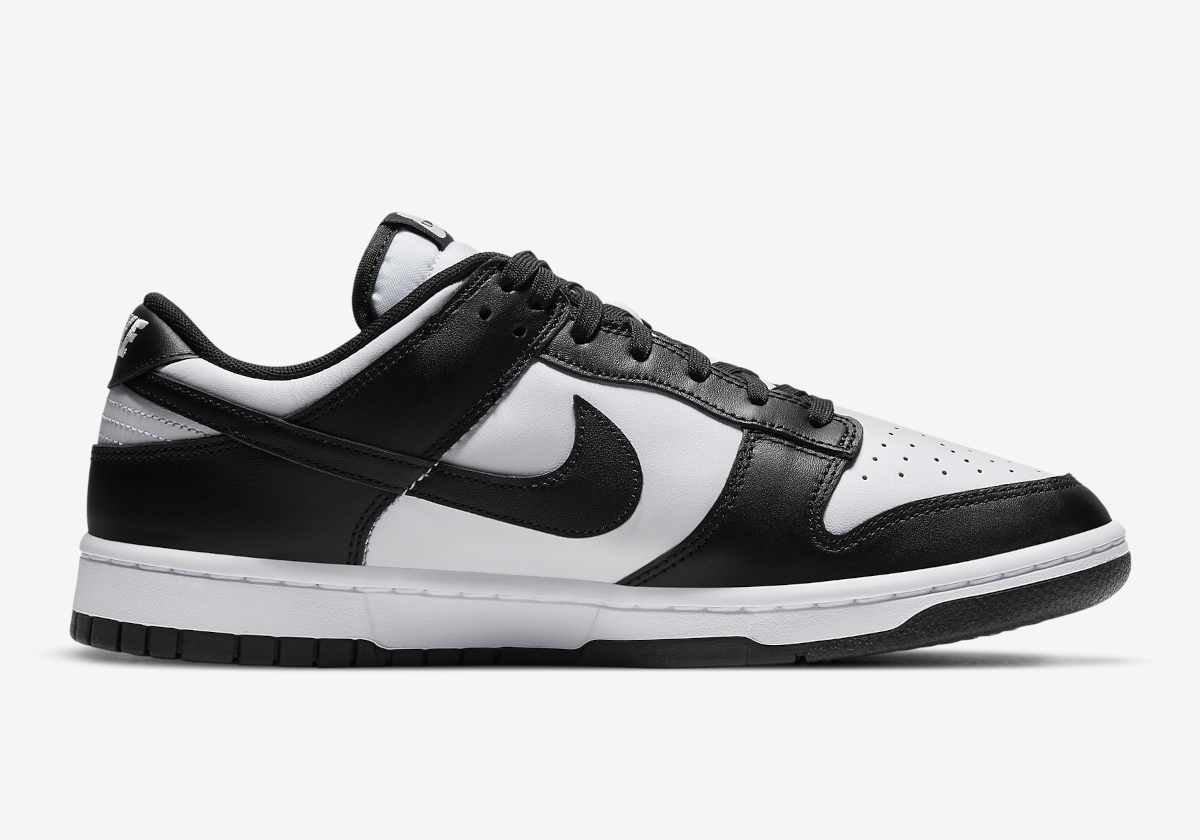
In 2008, Nike collaborated with the Ueno Zoo in Tokyo to create a special edition Dunk High. This shoe drew inspiration from the zoo’s giant pandas – in particular, Ling Ling – featuring a similar colour scheme of crisp white leather with contrasting black leather overlays. The “Ueno Panda” Dunk that came from this collaboration wasn’t a global release, but it planted the seed for the future Panda Dunk’s popularity. While it lacked the modern footwear technology of today’s Dunks, it captured the essence of what makes the Panda Dunk so appealing – a clean and simple design with a touch of playfulness, perfect for those looking for a comfortable and versatile shoe with a unique vibe.
The Panda Dunk was a hit among sneaker enthusiasts and quickly became a collector’s item and a staple among them. The shoes sold out quickly and contributed to a re-emergence of low-top design. Known for its comfort and style, the Panda Dunk has also been worn by several celebrities and the who’s who of influencers, such as Pharrell Williams, Lupe Fiasco, and Edison Chen, among others.
The shoes were re-released in 2018 and 2021 with minor changes and updates but retained the original design and concept. There is some debate among sneaker lovers about which year is the correct original release date – 2008 or 2021.
The Panda Dunk is a cultural icon that reflects the history, identity, and creativity of the people who wear it. One of the most sought-after releases in the collection is the “Black/White” Dunk Low, which has proved to be a versatile sneaker that’s a worthy addition to any collector’s ensemble.
The shoe’s versatility isn’t something to be taken lightly from a creative and practical standpoint. According to Sneaker News, “Throughout the ’80s and 1990s, basketball footwear in “Black/White” was common as it abided by professional regulations. Furthermore, the two-tone colour scheme was a lot more versatile, allowing those in the League (the NBA) and elsewhere to pair their sneakers with whichever uniform they wore”.
The Nike Panda Dunks are meant to turn heads and are a stunning piece that celebrates simplicity and creativity in sneakers. How else do you explain that a shoe that has primarily existed in just two colours for years can stay so relevant and have so many versions and iterations?
Nike Panda Dunk Fatigue
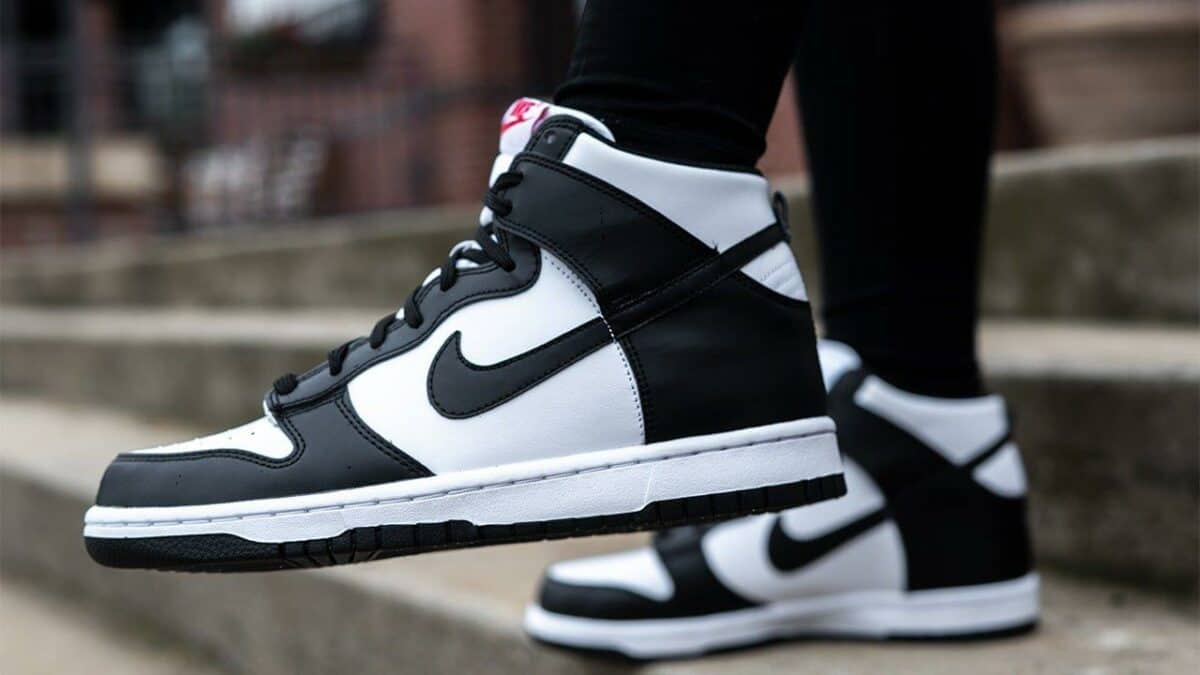
Well, if you ask the ‘haters’, they have an answer for you, and it’s not flattering. The question still remains: why, if this shoe is so popular and considered to be one of Nike’s best products, does it get so much disapproval from some members of the community?
Here’s the thing: Collectors are, on the whole, a daring bunch. They love the thrill of the hunt, and the excitement that comes from searching for limited-edition releases with unique materials and daring colourways. The Panda Dunk brings none of those vibes. The Panda Dunk, with its constant restocks, feels like the antithesis of that pursuit. It’s seen as a repetitive design, a “safe” option lacking the excitement and exclusivity associated with coveted releases.
In a feature about the Panda Dunks for Complex Sneakers, Matt Welty makes a sharp observation, writing that “‘Pandas’ are a cultural signifier that someone is new into sneakers or just doesn’t care about them all that much. Or, at least, just its NPC version of a sneaker. Something plain and simple that’s void of character”. What he’s essentially saying is that the Panda Dunk is a missed opportunity to engage with the deeper aspects of sneaker collecting, prioritizing comfort and convenience over the thrill of discovery and the satisfaction of owning a piece of sneaker history. They see it as a cop-out, a default choice for those who don’t get what it means to be bitten by the collector’s bug. It feels like sticking with the vanilla option, playing in the original team colours, and who wants that?
Panda Dunks Sales in 2024
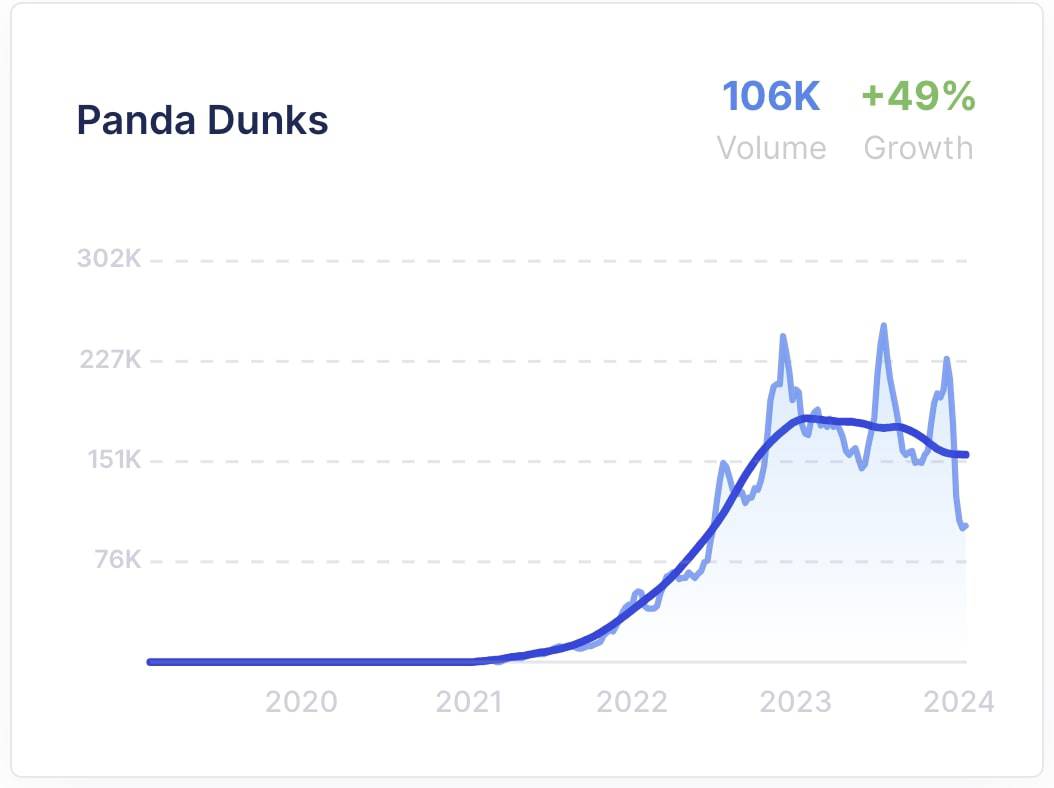
According to meetglimpse.com, interest in Panda Dunks surged by 49% over the last year, reaching a monthly search volume of 106,000 as of 2024. What’s even more surprising is that Panda Dunks are readily available to consumers in stores – with many pairs on shelves at retail stores like Footlocker. Many believe this is because Nike is actively targeting resellers by making their sneakers more available to the general public.
In The End
There isn’t an easy way to settle this debate. Maybe it’s just one of those debates that isn’t meant to be settled. Whether you see the Panda Dunks as a timeless classic or a mass-produced pile of boringness, one thing’s for certain: they’ve been a massive success for Nike. They consistently sell out, proving there’s a huge market for their clean aesthetic and comfortable design. When you really look at it, style is a personal choice (the team here at Sneaker Fortress debates what’s fresh and not so fresh on a daily basis), and the beauty of the sneaker world is that there’s a perfect pair out there for everyone, Panda Dunk lover or not.
Have you got your eye on a pair of Panda Dunks? If so, which ones are you willing to drop some cash on?


